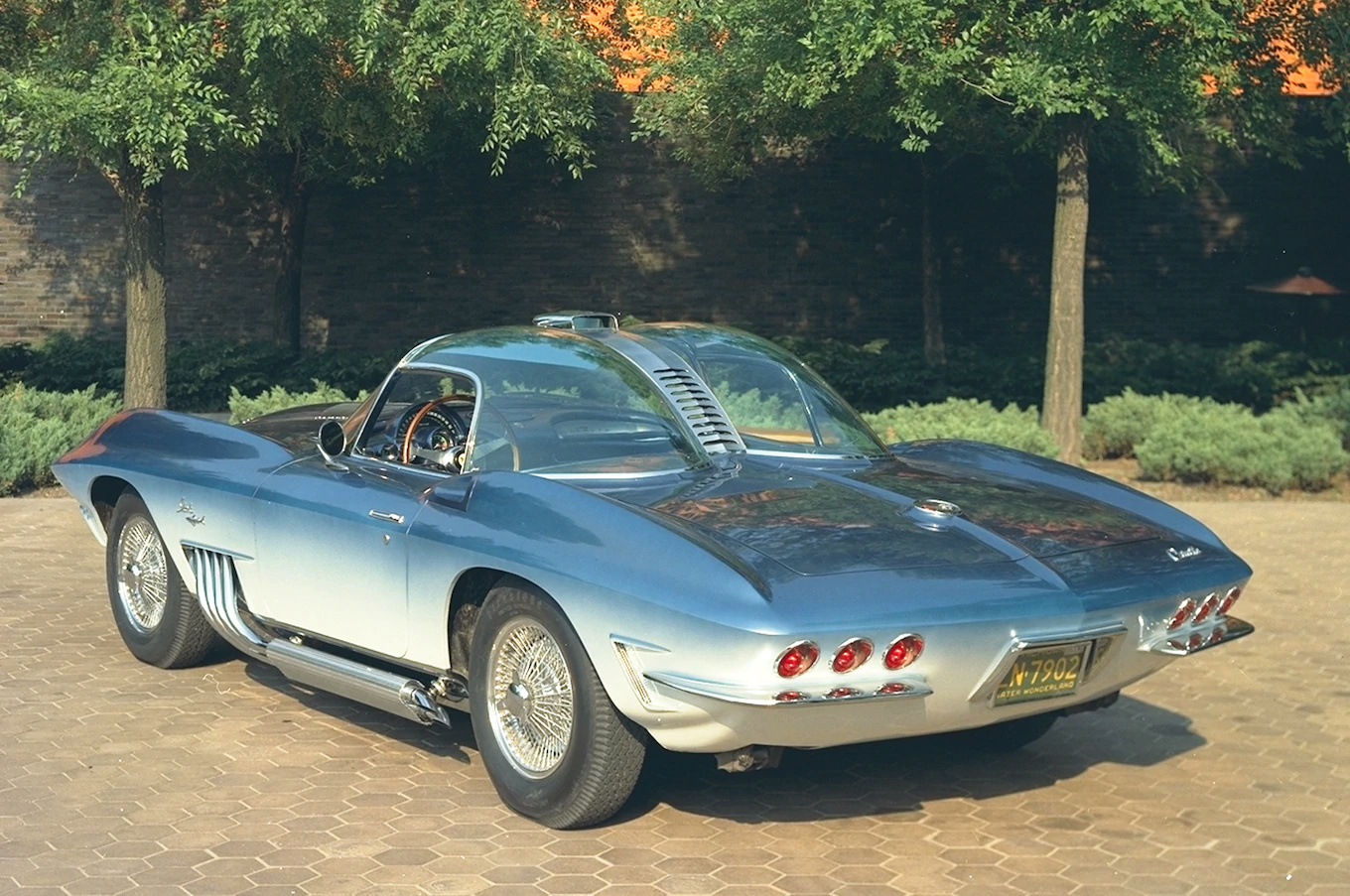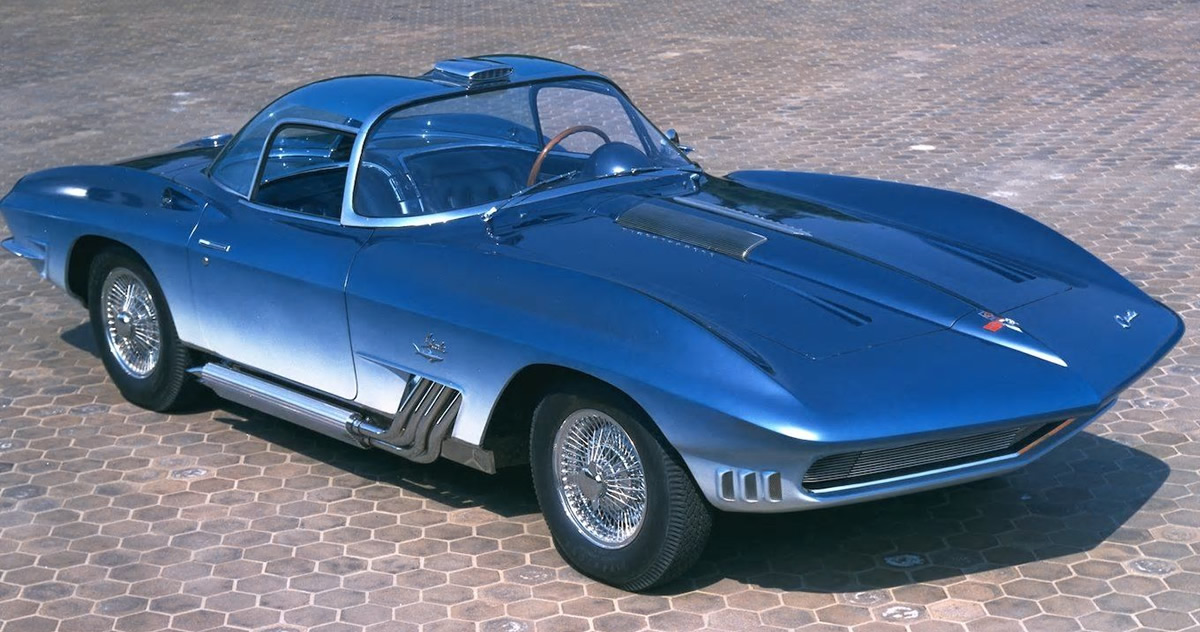Corvette Mako Shark I: Interview with Larry Shinoda
Mako Shark I: Interview with Larry Shinoda
Mako Shark I: Interview with Larry Shinoda
© Wayne Ellwood, 1995
Used here with permission by the author
From Larry Shinoda:
The story of Mako Shark II can't really start without saying a few words about Mako I. After all, the whole "shark" theme was Mitchell's idea and many of the ideas found on Mako II were also on Mako I. The "shark" theme was such an influence on Bill that it just had to carry-on for several years. This was the start of the famous story about the paint guys having to repaint Bill's fish to match the car, too. But since I've told that one so often, I'm not going to repeat it here. It is enough to say that the iridescent blue top body fading to a white underbody was a real challenge for the paint technology of the day but, when you look back, it was really a show-stopper.
So, if I can recap briefly, in 1962 the design work on the new 1963 Sting Ray was already done. GM wanted something to promote the new car and build some excitement. I did a couple of sketches of the 63 with the back clip of the XP-700 (double-bubble roof) added. At first it was about as incongruous as a guy in a tuxedo wearing a pair of tennis shoes but we worked on it a little more until it met Bill Mitchell's approval. This was Mako Shark I, or XP-755.
 |
 |
Everyone had a different opinion on some of the features we put on the car. Bill was very excited about the double-bubble roof, the side pipes and the periscope rearview mirror. Some of us argued against the lexan roof but Mr. Mitchell insisted. Ed Wayne to do the actual engineering for the roof. It was quite advanced technically, with a vaporized aluminum coating on the inside to cut down on heat gain and the periscope rearview mirror built right into it. I wasn't really enthused about it but I think it would be fair to say that, at least in design terms, the roof had some roots in the bomb-shaped headrest that I had done for the StingRay SS. So I guess I can take some consolation in that.
I don't want to dwell on this, but the prism-type periscope rearview mirror was really a big item with Bill and it appeared in several other subsequent cars up to ASTRO I. Maybe the most interesting story about the periscope mirror relates to its application to that car. ASTRO I was originally supposed to meet a 31 inches total overall height. Engineering couldn't meet that target but they did get it down to 33 1/2 inches. After that, they added the periscope rearview mirror and the highest point on the car was now about 35 1/2 inches. Because it was still under 36 inches, GM designed yardsticks with the 35 1/2 inch mark prominently displayed as one of their promotional give-aways for the New York auto show, to emphasize the fact that it was so low. I've got another story about the same mirror on ASTRO III, but I'll save that for the right article.
The Mako I had a lot of other design features that inspired some of us. First, the car came with a Latham supercharger. Wally Wyss wrote about Mako I and called it a "Roots-type" supercharger and suggested that it was made by GM's Detroit Diesel Division. I think that there is a lot of similar technology reflected in these brands, but as I recall it was a Latham. In either case, this was quite an elaborate set-up, with the side draft carburetors and all. So to show off this little bit of exotica, we developed some very fine detail for the hood bulge. The radial chrome fin arrangement let you see the supercharger as you eye moved over the hoodline. This feature got a lot of play in the magazines.
In more technical terms, the car was built on a 1961 chassis and made its debut in 1962. The nose of the car was heavily customized with headlights hidden in the grille area and almost 12 inches of extra length. The tail was upswept and that meant that we had to move the rear-most cross-member forward a little bit.
The Mako Shark I had a number of features that re-appeared on Mako Shark II, as I said. A lot of these were ideas that Bill had developed and that, depending on your outlook, either added to the design or fell in the category of gadgets. This was the first time we did the pop-up brake flaps, which were mirrored panels which raised (electrically) when you applied the brakes. The mirrored coating reflected a second set of upward pointing brake lights and gave additional warning of the fact that you were slowing down. There have been many variations on this theme since and now even the federal government is in the act with its CHMSL. A lot of show cars also use different intensity LED's in the brake light package to show things like the intensity of braking.
I did most of the original design work for this car in the basement studio that they now call the skunk works in Chevy Design III. Bill gave the overall direction and I did a lot of the exterior work.
Mako Shark II and Manta Ray >>
